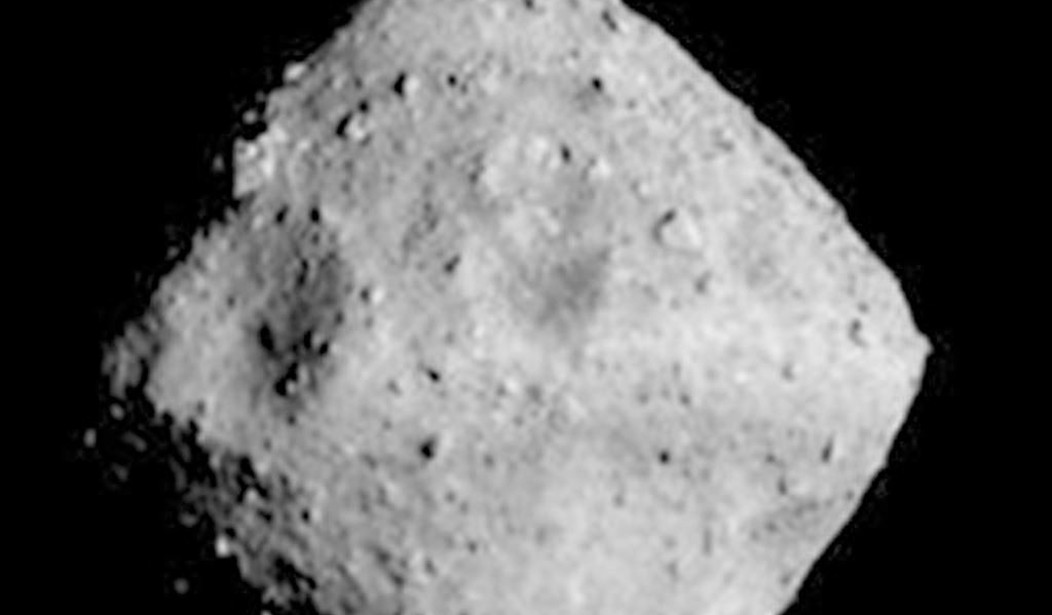Let’s take a quick break from all of the depressing international news and check in on the latest brand of crazy in the scientific world. For bonus points, this bizarre story comes to us from a scientist in Iran, but it’s not one of the ones currently trying to cook up a nuclear bomb. This fellow has grander ambitions and he is astrophysicist Sohrab Rahvar of Iran’s Sharif University. He’s published a paper in which he claims to have determined that we should be able to shift the orbit of the planet so that it begins orbiting the sun at a slightly greater distance than its current path. And he wants to do it using asteroids. The first of the many, many questions we should have about this insane scheme is obviously… why? Why would you want to do that? If you haven’t already guessed the answer, it’s because he thinks this will be a long-term solution for global warming and climate change. What else? (Mysterious Universe)
From the overstuffed “What Could Possibly Go Wrong?” file cabinet in the “Don’t Scientists Ever Watch Movies?” drawer comes this story from Iran – an astrophysicist concerned about climate change has devised a plan to change Earth’s orbit with asteroids that will swing it farther away from the Sun, thereby cooling it off. All together now: “Hasn’t he seen ‘Don’t Look Up’?”
“We can manipulate the orbit of asteroids in the asteroid belt by solar sailing and propulsion engines to guide them towards the Mars orbit and a gravitational scattering can put asteroids in a favorable direction to provide an energy loss scattering from the Earth. The result would be increasing the orbital distance of the earth and consequently cooling down the Earth’s temperature.”
The preprint paper “Gravity-Assist as a Solution to Save Earth from Global Warming” by astrophysicist Sohrab Rahvar of Iran’s Sharif University sounds so simple (just four pages are needed), elegant and possible (he includes the mathematical formulas he used) that one might be inclined to ignore the screams of “Don’t let him do it!” in various languages coming from around the world. While this “gravitational scattering” sounds more like scientific treatise on billiards (Rahvar himself calls it “gravitational billiards”), Rahvar is actually building upon previous research by Friedrich Zander, a German pioneer of rocketry and spaceflight in the Russian Empire and the Soviet Union.
My first thought after learning about this paper was that Rahvar wanted to alter the Earth’s orbit by slamming asteroids into it. And you could, at least hypothetically alter the planet’s orbit if you hit it repeatedly with some sufficiently large space rocks. Of course, all life on the planet would have been wiped out long before you noticed any difference.
But that’s not what he’s suggesting. He wants to park some large asteroids in orbit between the Earth and Mars, using the gravitational tug of the asteroids to pull our planet further away from the sun. The number of things that should obviously strike even a layman as being wrong here is rather staggering, but he somehow managed to publish a scientific paper on the subject.
First of all, our ability to alter the path of asteroids is limited to some of the smallest ones that don’t get much bigger than 100 meters across, even if we use nukes. (This is a proposal that is already on the table to save the planet from an incoming rock in that size range.) When I interviewed Dr. Megan Bruck Syal, a physicist working in planetary science and planetary defense at Lawrence Livermore National Lab last year, she told me that we wouldn’t be able to significantly move an asteroid larger than that relatively small size and to do even that we would need a significant amount of advance warning.
If you were to park an asteroid of that size somewhat closer to the earth than the asteroid belt, how much “pull” do you think it would exert on a planet with the mass of the Earth? The answer is virtually none, though the earth’s pull on the asteroid might start dragging it toward us. Still, Dr. Rahvar somehow concluded that we could shift the planet’s orbit measurably in just seventy years. I think someone needs to check his math.
But let’s just say for a moment that you could gradually shift the planet’s orbit outward in an effort to cool the atmosphere. Once you start it moving outward, how would you stop it? Unless you come up with some sort of braking system, the planet would eventually drift so much further away from the sun that everything would freeze over permanently. And don’t even get me started on what would happen when we began careening through the asteroid belt.
This isn’t just insanity. It’s almost undoubtedly complete nonsense. If this supposed astrophysicist is actually employed at a university in Iran and is teaching students, it’s rather amazing that they ever figured out how to enrich uranium. (Unless, of course, they bought the technology from the Russians or one of our other adversaries, which is probably far more likely.) In any event, you can all sleep tight, at least for now. If there are any massive asteroids headed our way it will be via the whim of nature and the natural gravitational processes of our solar system, not some global cooling scheme cooked up by this guy.









Join the conversation as a VIP Member